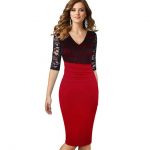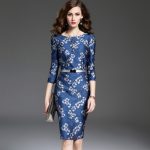Over the years, women’s fashion has undergone numerous transformations, reflecting changes in societal norms, technology, and cultural influences. From restrictive corsets to comfortable midi dresses, the evolution of women’s fashion is a fascinating journey that mirrors history itself.
In the 19th century, women’s fashion was dominated by the corset. This rigid undergarment was designed to create an hourglass figure by cinching the waist and pushing up the breasts. While corsets were seen as a symbol of femininity and beauty, they were also incredibly uncomfortable and unhealthy, often causing breathing difficulties and even organ damage.
As the 20th century progressed, women began to reject the confining nature of the corset and embrace more practical and comfortable clothing. The roaring 20s saw the rise of the flapper style, with loose-fitting, drop-waist dresses and shorter hemlines that allowed for more freedom of movement. This era marked a significant shift in women’s fashion, as they began to prioritize comfort and functionality over rigid beauty standards.
The 1950s brought about a return to more structured and feminine silhouettes, with full skirts, nipped-in waists, and exaggerated shoulders dominating the fashion scene. This era was all about embodying the idealized image of the perfect housewife, with glamorous dresses and perfectly coiffed hair.
In the 1960s, women’s fashion underwent a radical transformation with the emergence of the mod style. Mini skirts, shift dresses, and bold graphic prints became the new norm, challenging traditional notions of femininity and embracing a more youthful and rebellious aesthetic.
Fast forward to the present day, and women’s fashion has become more diverse and eclectic than ever. Midi dresses, which hit at or below the knee, have become a popular choice for women looking for a versatile and stylish option. With their flattering length and versatility, midi dresses are the perfect blend of comfort and sophistication, making them a favorite among fashionistas of all ages.
From corsets to midi dresses, the evolution of women’s fashion reflects the changing attitudes and values of society. As women continue to push boundaries and challenge conventional beauty standards, it will be interesting to see how fashion continues to evolve in the years to come. One thing is for sure: the future of women’s fashion is sure to be as exciting and dynamic as its past.
 thefashiontamer.com Fashion Inspirations
thefashiontamer.com Fashion Inspirations














